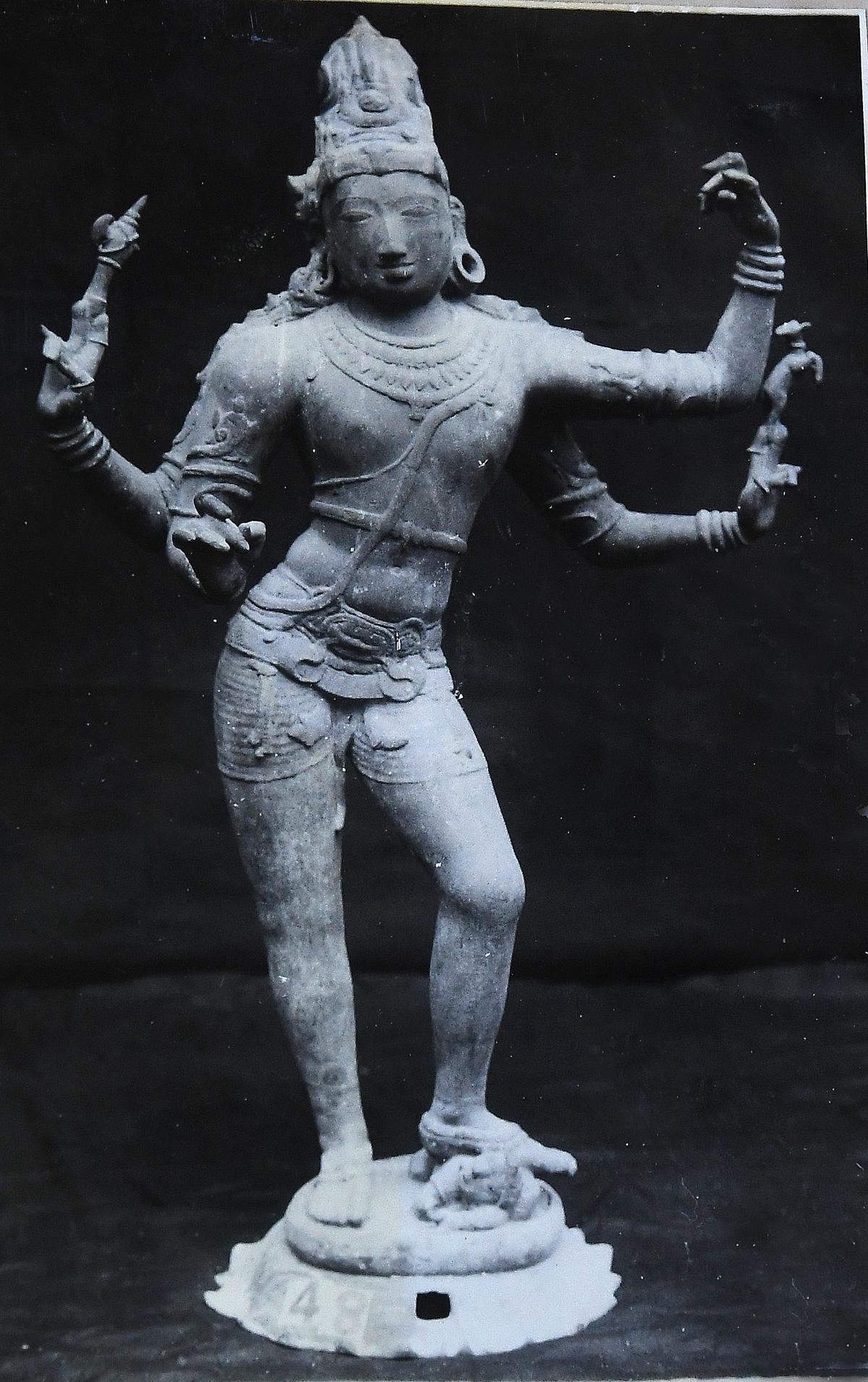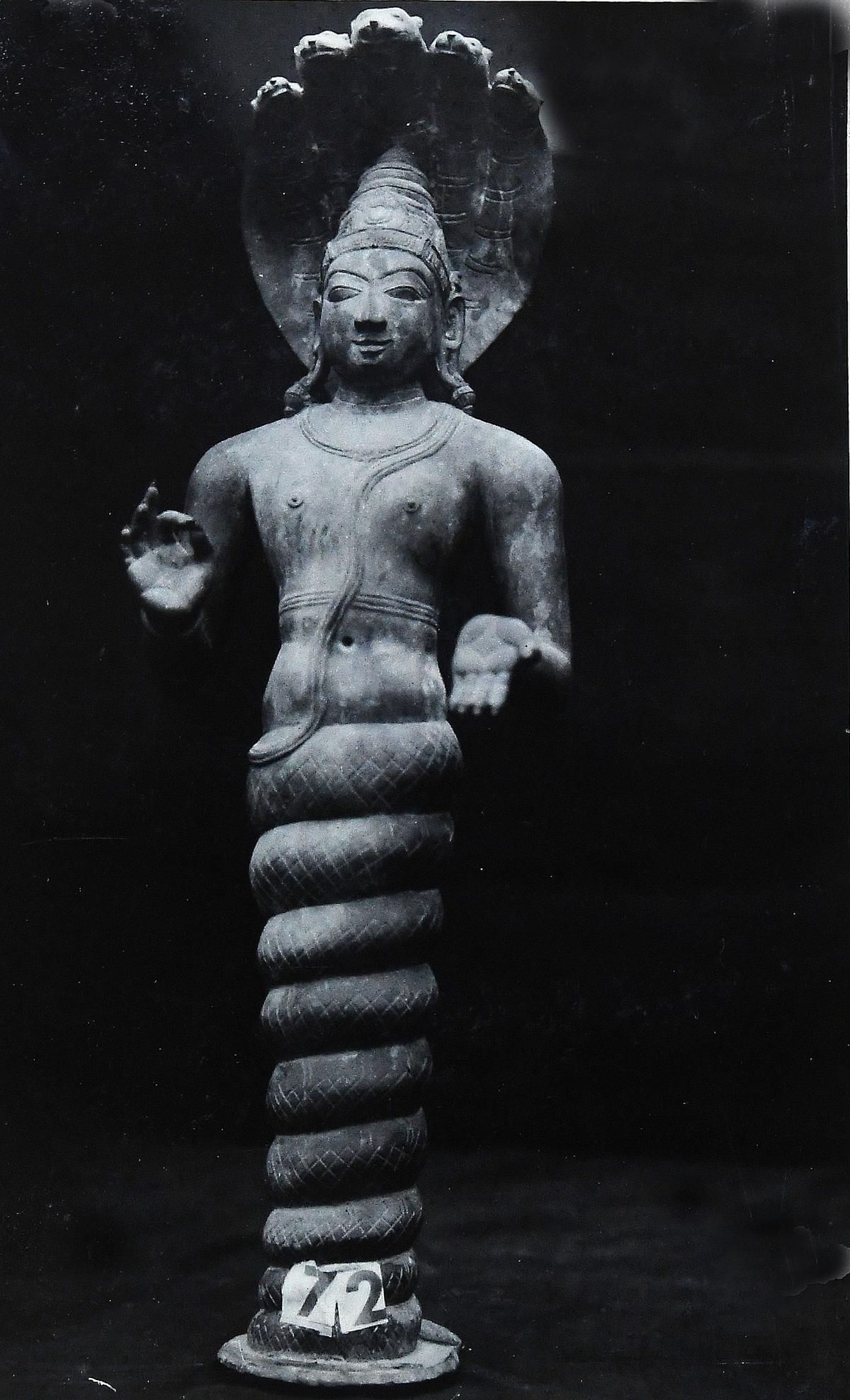[ad_1]
When noted archaeologist R. Nagaswamy, the then Director of the Department of Archaeology, entered a dark room in the famed Chidambaram Thillai Nataraja temple in 1976, he did not know what was in store for him. His inspection yielded a fine collection of bronze icons, and he estimated their value at ₹19 crore at the time.
An elated Nagaswamy wrote a detailed report to the Tamil Nadu government about the discovery.
“In my opinion, this is the most fabulous collection of ancient bronzes, particularly of the Chola period, in any individual temple under worship,” he wrote in his communication to G.S. Seshadri, Special Secretary, Commercial Taxes and Hindu Religious and Charitable Endowments (HR and CE) Department.
Today, these sculptures are valued between ₹400-₹450 crore and evoke a lot interest at a time when government agencies are leaving no stone unturned to preserve and secure ancient bronzes smuggled out of the country. The present value of these bronzes in the international market has been calculated in two ways. One is using just inflation and another is purchasing power parity. So, this range is the most accurate way of describing this.
Nagaswamy took pictures of each bronze, prepared an album and indicated their value in the international market. His letter explains that he had undertaken the project following a memo from the HR and CE Department. It is not clear how many idols he had found in the temple given the album’s age and state of preservation.

A bronze idol of Tirupurasamhara from the 10th century CE found at Chidambaram Thillai Nataraja temple in 1976.
“In view of both their artistic and antique value, it is necessary that we provide adequate security for the above group of bronzes in the Chidambaram temple,” he says in his confidential note, a copy of which The Hindu has seen.
He had also communicated to the department his plan to prepare a separate detailed description of each and every bronze in the collection. Most of the bronzes in the album belonged to the early Chola period, between the 10 th and 12 th centuries CE. A few of them had been made in the later Pandiya period, while some were from the 18 th century CE. The condition of the bronzes in pictures clearly shows that the bronzes were not in worship.
Nagaswamy, who later prepared an album, Masterpieces of Chola Art for the DMK government in 2011 on the occasion of the first millennium anniversary of the Thanjavur Big Temple, built by Rajaraja I, also made a reference to the bronzes in Chidambaram.
“A good number of metal images in the Nataraja temple of Chidambaram belong to the age of Chola king Kulotunga-I. Naralokavaira, who was the commander-in-chief under Chola emperors Kulotunga I and his son Vikrama Chola, and who participated in many wars, has contributed immensely to many temples, particularly in Chidambaram, where he set up some metal images,” Nagaswamy writes.
While evaluating the bronzes, he had taken into consideration the Sivapuram Nataraja, which was valued at ₹75 lakh in the foreign market. He also had taken into account the rarity and artistic value of individual bronzes.
For example, he had valued the Sivakami idol of the 10 th century CE to be ₹60 lakh and the Parvathi idol ₹75 lakh. An idol of Manikkavachaka and Somaskanda, which also belonged to the same period, were priced ₹60 lakh and ₹70 lakh, respectively.

A bronze idol of Patanjali from the 12th century AD found at Chidambaram Thillai Nataraja temple in 1976.
There was a Nataraja that belonged to the 12 th century CE and another made during the later Pandiya Period of the 14 th century CE. There were ancient idols of Bhiksatana, Adhikaranandhi, Patanjali, Chandrasekara, Appar and Gnanasambandar and later period bronzes, which have been valued in the thousands.
Even though Nagaswamy recommended adequate security to protect the bronzes, it is unclear if the government acted on his report, because the current value of the bronze idols have raised concern about their safety and whereabouts. But G. Chandrasekaran, the advocate of the Pothu Dikshitars of the Chidambaram temple, said they were very much in the temple and were being protected.
Villupuram MP D. Ravikumar, whose doctoral thesis is on the Chidambaram temple vis-a-vis the legend of Nandanar, said it was high time that the bronzes were surveyed and kept in a gallery at the temple. “They are invaluable bronzes and the devotees have the right to see them,” he added.
[ad_2]
Source link